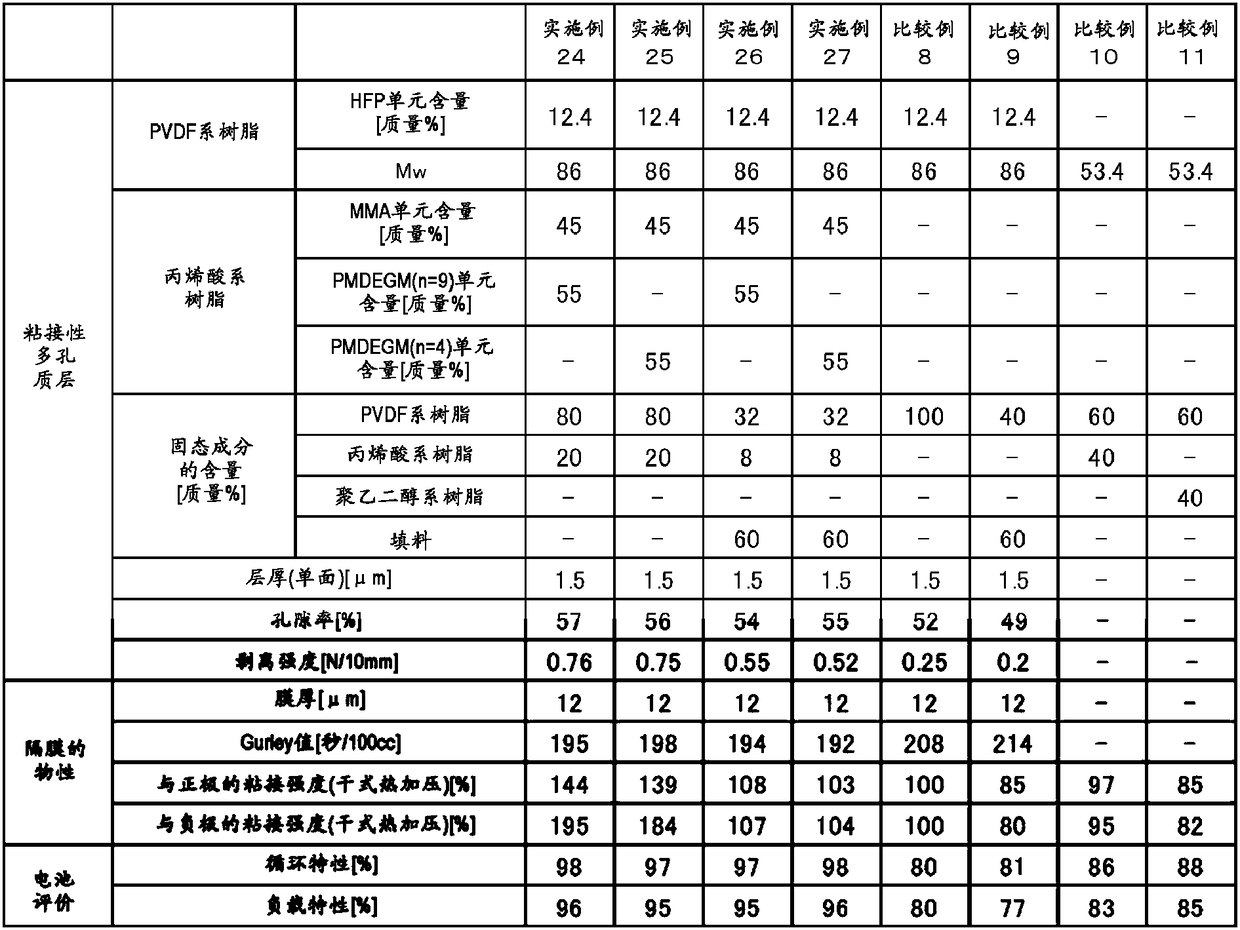Separator for non-aqueous secondary battery and non-aqueous secondary battery
A secondary battery, non-aqueous technology, used in secondary batteries, non-aqueous electrolyte batteries, battery electrodes, etc., can solve the problems of increased internal resistance and decreased adhesion of batteries
- Summary
- Abstract
- Description
- Claims
- Application Information
AI Technical Summary
Problems solved by technology
Method used
Image
Examples
Embodiment 1
[0234] Polyvinylidene fluoride resin (VDF-HFP copolymer, HFP unit content is 12.4% by mass, weight average molecular weight is 860,000) and acrylic resin (methyl methacrylate-styrene copolymer, polymerization ratio [mass Ratio] is 50:50, weight average molecular weight is 115,000, and glass transition temperature is 105 ℃) be dissolved in the mixed solvent of dimethylacetamide and tripropylene glycol (dimethylacetamide: tripropylene glycol=80:20 [mass ratio]), a coating solution for forming an adhesive porous layer was produced. The mass ratio of the polyvinylidene fluoride-based resin and the acrylic resin contained in the coating liquid was 80:20, and the resin concentration of the coating liquid was 5.0% by mass.
[0235] The coating solution was applied to both sides of a polyethylene microporous membrane (film thickness 9.0 μm, Gurley value 150 sec / 100 cc, porosity 43%) as a porous substrate (in this case, the surface and the back surface Coated so that the coating amoun...
Embodiment 2
[0237] The acrylic resin was changed to a terpolymer of methyl methacrylate-styrene-unsaturated carboxylic acid anhydride (polymerization ratio [mass ratio] 10:70:20, weight average molecular weight 113,000, glass transition temperature was 130° C.), except that, it was carried out in the same manner as in Example 1 to produce a separator.
Embodiment 3
[0239] The acrylic resin was changed to a terpolymer of methyl methacrylate-styrene-unsaturated carboxylic acid anhydride (polymerization ratio [mass ratio] of 30:50:20, weight average molecular weight of 130,000, glass transition temperature was 115° C.), except that, it was carried out in the same manner as in Example 1 to produce a separator.
PUM
| Property | Measurement | Unit |
|---|---|---|
| melting point | aaaaa | aaaaa |
| thickness | aaaaa | aaaaa |
| strength | aaaaa | aaaaa |
Abstract
Description
Claims
Application Information
 Login to View More
Login to View More - R&D
- Intellectual Property
- Life Sciences
- Materials
- Tech Scout
- Unparalleled Data Quality
- Higher Quality Content
- 60% Fewer Hallucinations
Browse by: Latest US Patents, China's latest patents, Technical Efficacy Thesaurus, Application Domain, Technology Topic, Popular Technical Reports.
© 2025 PatSnap. All rights reserved.Legal|Privacy policy|Modern Slavery Act Transparency Statement|Sitemap|About US| Contact US: help@patsnap.com



